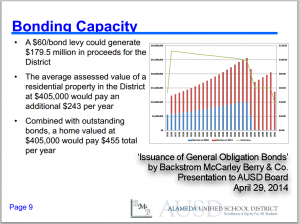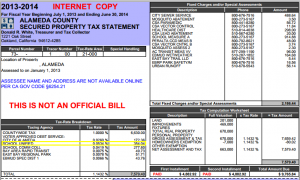Labor day is the traditional official start of the election season, and sure enough, in Alameda, we saw the obligatory law signs sprouting that weekend.
But for the Alameda Unified School District, the campaign for Measure I (Vote No!), on the ballot this November, started back in 2012, when the ugly brown fence went up around the historic Alameda High School building.
Almost immediately after the Measure A parcel tax passed in 2011, the district started spending on the administration.
Of course, parcel tax money was not to be used on administrators, but what it did was free up a bunch of general fund dollars for the administration to play with.
Right away, the superintendent began hiring administrative assistants, and plotting the move of the administration’s offices from the historic Alameda High School to new, upgraded digs.
No space at the former Naval Air Station Alameda – leased from the City of Alameda on favorable terms – would do. Instead, AUSD administrators had to have a fancy new office in Marina Village, leased from a property owner that contributed funds to the pro-parcel tax campaign.
The lease included options to purchase, to boot; the district wanted out of the historic high school building for good.
And then the fence went up,
This was the beginning of the campaign for a $180 million tax bond measure (Measure I) that has no detailed spending plan, and nothing that binds the school district spending tax payer money in accordance with what voters think they are voting on.
Measure I is completely irresponsible – it provides no detailed spending plan, and does not commit to voters in advance exactly how the money will be used.
The Measure I implementation plan? It’s a hoax – it’s not part of the ballot measure, read it carefully.
Fixing the historic Alameda High School building? Measure I does not commit to doing that. The so-called ‘Measure I implementation plan’ is not part of the ballot measure.
It was only a massive public outcry by teachers and residents that the district didn’t go forward and spend millions to buy their lush new office building.
AS a community, we can’t afford to protest and demonstrate with each and every bad spending decision that would surely follow the passage of this ‘superbond’ tax measure.
The only way to ensure that AUSD uses your tax dollars wisely is to Vote No on Measure I, and tell the district to go back to the drawing board.
Vote No on I.


